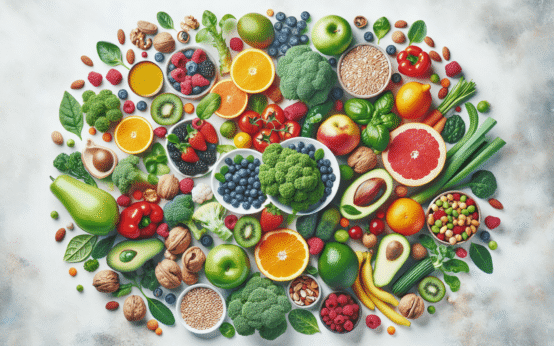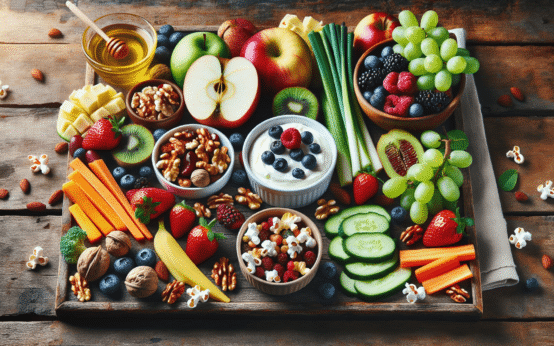Have you ever wondered how to create balanced meals that satisfy not just your hunger but also your nutritional needs? Crafting a meal that is balanced is like creating a beautiful piece of art, combining different elements to form a masterpiece that supports your health. Whether you’re a culinary enthusiast or someone looking to step up your nutrition game, understanding the essence of a balanced meal can set off a cascade of positive effects on your well-being.
What is a Balanced Meal?
A balanced meal is one that offers the right amounts of key nutrients — proteins, carbohydrates, fats, vitamins, and minerals — to fulfill your body’s needs. These nutrients work synergistically to provide energy, promote growth, and maintain body functions. But it’s not just about individual nutrients; it’s about harmony. Each meal should ideally have a variety of foods to ensure that you’re not only meeting calorie needs but also getting a broad spectrum of health benefits.
The Importance of Balanced Meals
Balanced meals are pivotal to maintaining overall health. They help in managing weight, boosting energy levels, and supporting mental health. Moreover, they reduce the risk of chronic diseases like heart disease, diabetes, and cancer. When your meals are balanced, you enjoy sustained energy levels throughout the day and promote efficient functioning of body systems. Thus, understanding the composition of a balanced meal is an essential step towards a healthier lifestyle.
The Building Blocks of a Balanced Meal
Breaking down a balanced meal involves knowing its components. Here is how each nutrient contributes to your meal’s balance:
Proteins: The Building Blocks
Proteins are essential for the growth and repair of tissues. They are made up of amino acids, which are indispensable for constructing enzymes, hormones, and neurotransmitters. While animal-based sources like meat, poultry, and eggs are well-known protein providers, plant-based options such as beans, lentils, and tofu are equally important. Proteins should make up roughly a quarter of your plate.
Carbohydrates: The Body’s Fuel
Carbohydrates are the body’s main energy source. They should constitute about half of your plate. Choosing complex carbohydrates such as whole grains, starchy vegetables, and legumes ensures a slow and steady release of energy. These are preferable over simple carbohydrates like refined sugars and processed foods, which can cause rapid spikes and drops in blood sugar levels.
Fats: Essential and Misunderstood
Fats are a crucial part of a balanced diet, supporting brain health, hormone production, and nutrient absorption. They should fill about a quarter of your plate. Distinguish between healthy fats, found in nuts, seeds, avocados, and olive oil, and unhealthy fats, typically present in fried foods and baked goods. Opt for unsaturated fats over saturated and trans fats for optimal health benefits.
Vitamins and Minerals: The Micronutrient Powerhouses
Though needed in smaller quantities, vitamins and minerals are vital. Different foods provide different micronutrients, so eating a varied diet is key. Colorful fruits and vegetables often contain a wealth of these nutrients, and they should occupy a significant portion of your meal.

Crafting Your Balanced Meal
Creating balanced meals requires thoughtful selection and combination of ingredients. Here is a step-by-step guide to help you create your ideal meal:
Step 1: Choose Your Protein Source
Start with selecting a protein source. If you’re a meat-eater, chicken, fish, or lean cuts of beef may suit your preference. Vegetarians might opt for beans, chickpeas, or tofu. Aim for a portion about the size of your palm.
Step 2: Add Complex Carbohydrates
Next, incorporate a good source of complex carbohydrates. This could be brown rice, quinoa, whole grain bread, or sweet potatoes, offering you a steady energy supply throughout the day.
Step 3: Include Healthy Fats
Add a source of healthy fats to your meal. This could be a handful of nuts, a drizzle of olive oil, or slices of avocado. Not only do they add flavor and richness to your dish, but they also support your health in a multitude of ways.
Step 4: Load Up on Vegetables
Vegetables should occupy at least half of your plate. Use a diverse array of colors to ensure a range of nutrients. This might include leafy greens, bell peppers, carrots, or broccoli. They add volume to your meal with minimal calories and maximum nutrition.
Step 5: Finish with Flavor
Lastly, enhance your meal with herbs and spices. These not only excite your taste buds but come packed with antioxidants that offer various health benefits. Experiment with basil, cilantro, cumin, or ginger to elevate your dish.
Balancing Meals Throughout the Day
Achieving balance in a single meal is excellent, but distributing that balance throughout the day ensures sustained energy and nutrition. Here’s how you can approach your day:
Breakfast: The Jumpstart
While some skip breakfast to save calories, it’s better to start your day with a balanced meal. This might include a bowl of oatmeal topped with nuts and fruits, or a smoothie with spinach, bananas, and a scoop of protein powder.
Lunch: Midday Fuel
Lunch should refuel your energy reserves. A grilled chicken salad with a variety of vegetables can be both nourishing and delicious. Incorporate some quinoa or whole-grain bread for carbohydrates and a vinaigrette for healthy fats.
Dinner: The Satisfying Conclusion
Dinner should be lighter than lunch but still balanced. Grilled salmon with steamed vegetables and brown rice could be a satisfying end to your day.
Snacks: Keep Them Healthy
Keep your snacks healthy and nutritious. Opt for yogurt with berries, a handful of almonds, or veggie sticks with hummus to tide you over between meals.

Overcoming Common Challenges
Crafting balanced meals can sometimes present challenges, especially with a busy lifestyle. Here are some tips to help you overcome these obstacles:
Time Constraints
Meal prep is your best friend. Dedicate time at the beginning of the week to plan and prepare meals. This ensures you have nutritious options readily available, saving you from resorting to less healthy convenience foods.
Budget Considerations
Eating balanced meals doesn’t have to break the bank. Buying in bulk and choosing seasonal produce can significantly reduce costs. Foods like beans, lentils, and whole grains offer excellent nutrition for their price.
Picky Eating Habits
If you or your family members have picky eating habits, try to introduce new foods gradually. Mix them with familiar favorites to ease the transition and make meals more appealing.
Special Diet Considerations
Certain diets have specific requirements that make meal balancing a bit different. Here’s a look at some special considerations:
Vegetarian and Vegan Diets
These diets can be balanced by ensuring adequate intake of plant-based proteins and B12, iron, and omega-3s, which might otherwise be derived from animal-based products. Incorporate fortified foods or supplements as necessary.
Gluten-Free Diets
For those with gluten sensitives or celiac disease, it’s important to find suitable substitutes for wheat-based products. Quinoa, rice, and gluten-free oats are excellent alternatives.
Low-Carbohydrate Diets
Balancing meals on a low-carbohydrate diet involves focusing on protein and fat intake, while also incorporating non-starchy vegetables to ensure nutrient diversity.

Conclusion
Creating balanced meals is a key component of a healthy lifestyle. It requires understanding and combining the right portions of macronutrients and micronutrients. By following this guide, you can confidently craft meals that not only meet your nutritional needs but also bring joy and satisfaction to your culinary experience. Think of every meal as an opportunity to nourish your body, delight your senses, and create culinary art with care and intention. As you enhance your skills in creating balanced meals, you’ll find yourself feeling more energized and possibly even more inspired in the kitchen.

 How To Create A Balanced Meal Plan For Optimal Health
How To Create A Balanced Meal Plan For Optimal Health  Top 5 Superfoods To Include In Your Diet
Top 5 Superfoods To Include In Your Diet  How Our Diet Affects Aging: Foods For A Longer Life
How Our Diet Affects Aging: Foods For A Longer Life  How To Create A Longevity-Boosting Diet Plan
How To Create A Longevity-Boosting Diet Plan  10 Healthy Snacks For Weight Loss
10 Healthy Snacks For Weight Loss  How To Meal Prep For The Week: A Beginner’s Guide
How To Meal Prep For The Week: A Beginner’s Guide  How To Create A Skincare Routine For Oily Skin
How To Create A Skincare Routine For Oily Skin  The Best Ingredients For Anti-Aging Skincare
The Best Ingredients For Anti-Aging Skincare  Skincare Myths That Are Wrecking Your Glow
Skincare Myths That Are Wrecking Your Glow  Natural Skincare 101: Everything you Need to Know
Natural Skincare 101: Everything you Need to Know  The Ultimate Guide To Sunscreen: What You Need To Know
The Ultimate Guide To Sunscreen: What You Need To Know  Guide to the Best Anti acne Products for Clear Skin
Guide to the Best Anti acne Products for Clear Skin